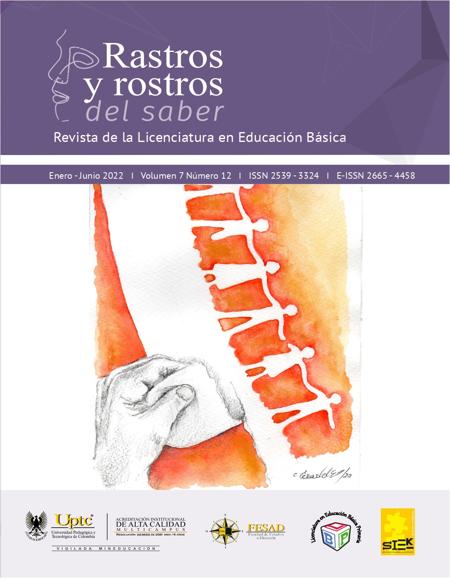Homogeneous and heterogeneous fractions, understanding through a digital educational resource.

Abstract
The study of fractions is a subject that calls for attention and solid interpretation, so that its concept and development are at an inferential level; that is, the learning process of fractions should give results in other areas of the area of mathematics. Knowledge of the subject is so important, because it is not only a partition of the whole, it is an instrument that supports daily life when having the need to count, measure or distribute. For this reason, this work aimed to develop the understanding of fractions, specifically homogeneous and heterogeneous, implementing a current strategy, such as digital educational resources, maintaining a structure linked to the use of ICT. With fifth grade students of the Corinto branch of the Institución Educativa Técnica Agropecuaria de Pajarito-Boyacá, we wanted to implement a pedagogical strategy for the teaching and learning of homogeneous and heterogeneous fractions, supported by the design of interactive digital resources published in a Web scenario, based on a qualitative approach and a participatory action research that allowed the use of sufficient instruments to collect the necessary data and thus be able to analyze to what extent the digital educational resources satisfactorily supported or not, the understanding of homogeneous and heterogeneous fractions.
Keywords
Comprehension, Fractions, Mathematics, Digital resources, Technology
Author Biography
Luis Fernando Higuera Contreras
Magíster en Didáctica de la Matemática, Especialista en didáctica de la matemática para la educación básica, Licenciado en Educación Básica con énfasis en Matemáticas, Humanidades y Lengua Castellana, Universidad Pedagógica y Tecnológica de Colombia. Docente Colegio Institución Educativa Técnica Agropecuaria de Pajarito-Boyacá.
Derly Francedy Poveda Pineda
Investigadora Junior (IJ) SNCTeI, convocatoria 894. Magíster en Elearning, Universidad Autónoma de Bucaramanga, Especialista en Gerencia Educacional, Licenciada en Informática Educativa, Universidad Pedagógica y Tecnológica de Colombia. Facultad de Estudios a Distancia. Integrante grupo de Investigación SIEK. Profesora-investigadora Licenciatura en Educación Básica Primaria, Universidad Pedagógica y Tecnológica de Colombia.
References
- Álvarez, R. (24 de abril de 2017). Galileo y las Matemáticas del Universo. Obtenido de blog del Instituto de Matemáticas de la Universidad de Sevilla: https://institucional.us.es/blogimus/2017/04/galileo-y-las-matematicas-del-universo/
- Espinoza, L., & Campillay, W. (2018). La Teoría de Situaciones Didácticas en Latinoamérica, ¿Funciona? virtual: Comité Latinoamericano de Matemática Educativa.
- Fernández, C. (23 de octubre de 2020). Fracciones homogéneas y fracciones heterogéneas. Obtenido de smartick.es: https://www.smartick.es/blog/matematicas/fracciones/fracciones-homogeneas-heterogeneas/#:~:text=Que%20dos%20fracciones%20sean%20heterog%C3%A9neas,eso%2C%20sus%20denominadores%20son%20distintos.&text=Por%20tanto%20sumar%20o%20restar,ya%20tienen%20el%20mism
- MEN. (2015). Derechos Básicos de Aprendizaje-Matemáticas. Obtenido de: http://www.mineducación.gov.co
- Universidad de Navarra. (2015). Recursos Digitales. Obtenido de unav. edu: https://www.unav.edu/documents/19205897/21695941/recursos-digitales.pdf
- Vidal, R. (enero de 2016). La Didáctica de las Matemáticas y la Teoría de Situaciones. Obtenido de ducrea.cl: https://educrea.cl/wp-content/uploads/2016/01/DOC-La-Didactica.pdf